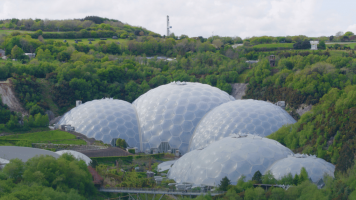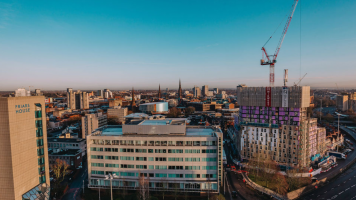In January 2019, Lancaster City Council (LCC) declared a climate emergency after councillors unanimously voted to work towards being Net Zero carbon by 2030. An important first step in developing a strategy to tackle the Council’s CO2 emissions has been to determine what the main sources of emissions are. We’ve collated that data into one place by producing a CO2 dashboard.
We are committed to meeting our Net Zero carbon target by 2030 but unless we understand exactly where our emissions are coming from and how much each element is producing, we can’t make a targeted attack.
This dashboard looks at the Council’s scope 1 (Council property gas, vehicle fleet, staff work travel), 2 (electricity consumption) and 3 (staff commuting - pre-COVID, local taxis, council housing emissions). It serves seven key purposes:
- Provides an overview to councillors and heads of service of the Council’s carbon footprint.
- Informs the Council’s strategy by identifying the most impactful actions to tackle the climate emergency.
- Analyses energy usage, showing how it can be broken down into subcategories and time periods.
- Operates as a quick source of energy data to develop projects for contractors and consultants.
- Offers comparisons of performance on how well individual departments are doing to tackle the climate crisis.
- Spreads awareness of the situation among Council staff.
- Provides the public with information on the progress that the Council is making to reach Net Zero carbon.
The dashboard is already in use but is regularly updated to improve flexibility and useability. At the moment, gas and electricity are automated and updated once a month and we’re currently in the process of automating other emission sources where technologically possible.
As an internal project, the main stakeholders are all within the Council - i.e heads of services and councillors. To gain access to data, however, it’s been necessary to liaise with several departments.
The dashboard is a fundamental part of LCC’s multifaceted approach to tackling climate change. The Council’s Climate Strategy is informed by this project.
Our scope 1 and 2 emissions are primarily produced by Council-owned buildings and fleet, with Salt Ayre Leisure Centre (SALC) being the biggest single emitter. It’s been important to tackle SALC as a priority and as such, LCC has concentrated on turning a nearby landfill site into a solar farm to power the centre. Thanks to the dashboard, we’re able to use the knowledge of our emissions to bring down key contributors as quickly as possible.
No projects would be possible without first ascertaining their value and working towards reducing our emissions can only happen if everyone understands the importance of the work.
The dashboard has instigated the development of projects, streamlined the process of acquiring key data to assess project feasibility and crucially, has educated the relevant members of staff on the importance of and where we need to lower our emissions.
It’s become clear that we’d be unable to effectively start our journey towards Net Zero carbon without this project. More learnings may become clear as we move near to 2030.
info@uk100.org





